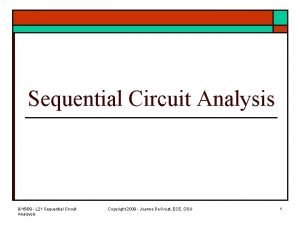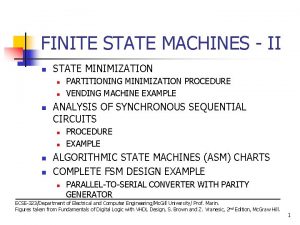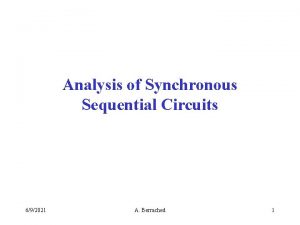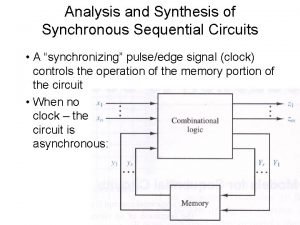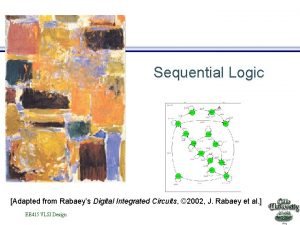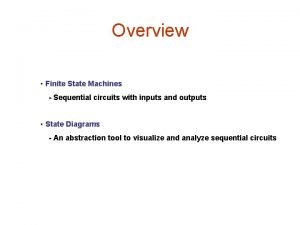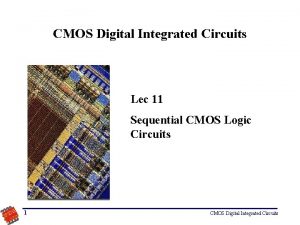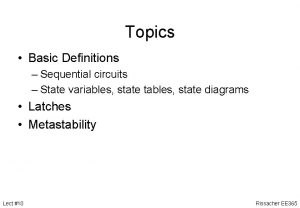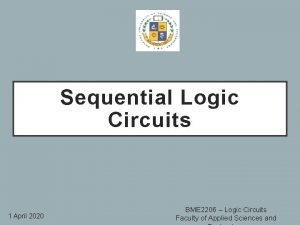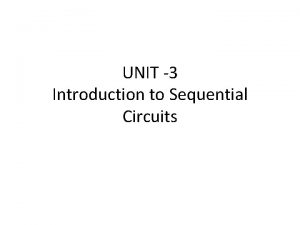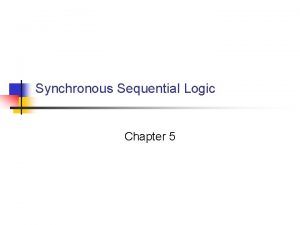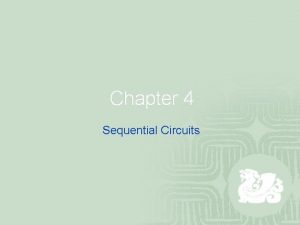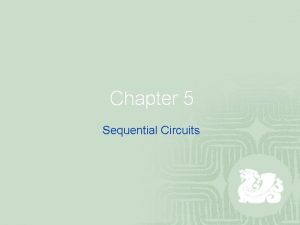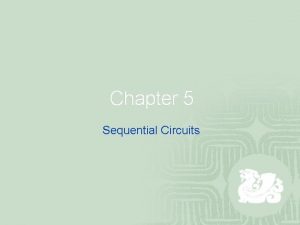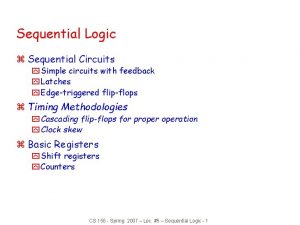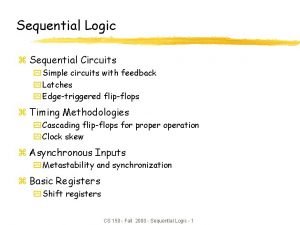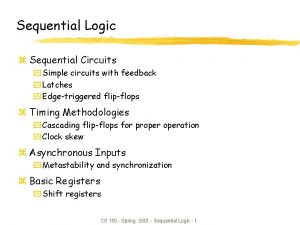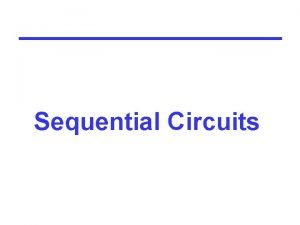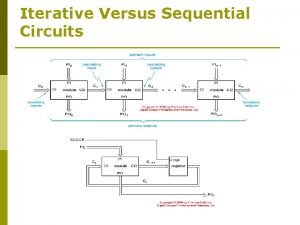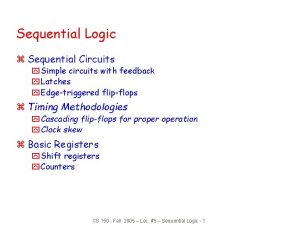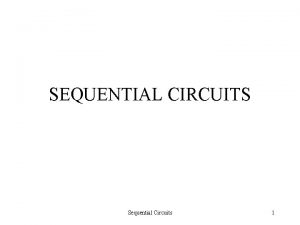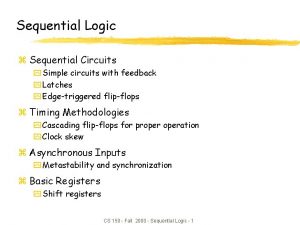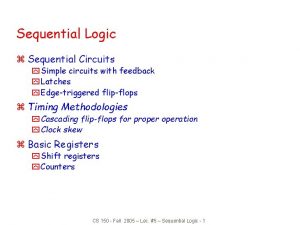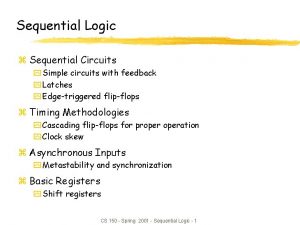Analysis of sequential circuits Analysis of sequential circuits
















- Slides: 16

Analysis of sequential circuits

Analysis of sequential circuits • The analysis of a sequential circuit consists of obtaining a table or a diagram for the time sequence of inputs, outputs, and internal states. • It is also possible to write Boolean expressions that describe the behavior of the sequential circuit. • A logic diagram is recognized as a clocked sequential circuit if it includes flip-flops with clock inputs. • The flip-flops may be of any type, and the logic diagram may or may not include combinational logic gates. Steps for analyzing sequential circuits 2

Analysis of sequential circuits Equations: The outputs of the flip-flops represent the present-state variables. The inputs of the flip-flops determine the next state that the circuit will enter. and B(t) Present-state: A(t) Next-state: : A(t+1) and B(t+1) Equations: • Output: 3

Analysis of sequential circuits Equations: We can omit the designation (t) after each variable for convenience. Present-state: A(t) and B(t) Next-state: : A(t+1) and B(t+1) Equations: Output: • Output: 4

Analysis of sequential circuits Equations: another presentation 5

Analysis of sequential circuits State Table The time sequence of inputs, outputs, and flip-flop states can be enumerated in a state table (sometimes called a transition table). 6

Analysis of sequential circuits State Table • In general, a sequential circuit with m flip flops and n inputs needs 2 m+n rows in the state table. • The binary numbers from 0 through 2 m+n-1 are listed under the present-state and input columns. • The next-state section has m columns, one for each flip-flop. • The binary values for the next state are derived directly from the state equations. • The output section has as many columns as there are output variables. 7

Analysis of sequential circuits State Diagram (Finite State Machine (FSM)) • The information available in a state table can be represented graphically in the form of a state diagram. • A state is represented by a circle, and the (clock-triggered) transitions between states are indicated by directed lines connecting the circles. 8

Analysis of sequential circuits Example: D FF Equations: 9

Analysis of sequential circuits Example: JK FF Equations: 10

Analysis of sequential circuits 11

Analysis of sequential circuits 12

Analysis of sequential circuits 13

Analysis of sequential circuits Example: T FF Equations: 14

Analysis of sequential circuits Example: T FF 15

Analysis of sequential circuits Example: T FF 16
 Sequential circuit analysis
Sequential circuit analysis Asm chart for vending machine
Asm chart for vending machine Analysis of sequential circuits
Analysis of sequential circuits Analysis of synchronous sequential circuits
Analysis of synchronous sequential circuits State diagram
State diagram Non bistable sequential circuits
Non bistable sequential circuits Rangkaian logika sekuensial
Rangkaian logika sekuensial Finite state machine sequential circuits
Finite state machine sequential circuits Non bistable sequential circuits
Non bistable sequential circuits Sequential circuits prelude
Sequential circuits prelude Sequential circuits
Sequential circuits State diagram
State diagram 74ls112
74ls112 Mealy and moore model
Mealy and moore model Digital circuits
Digital circuits Advantages of parallel circuits over series circuit
Advantages of parallel circuits over series circuit Rangkaian sekuensial
Rangkaian sekuensial
